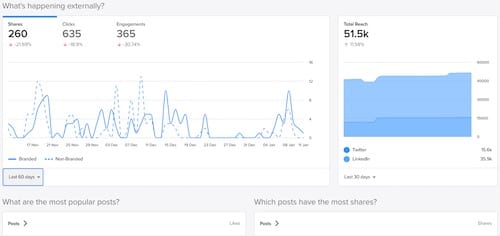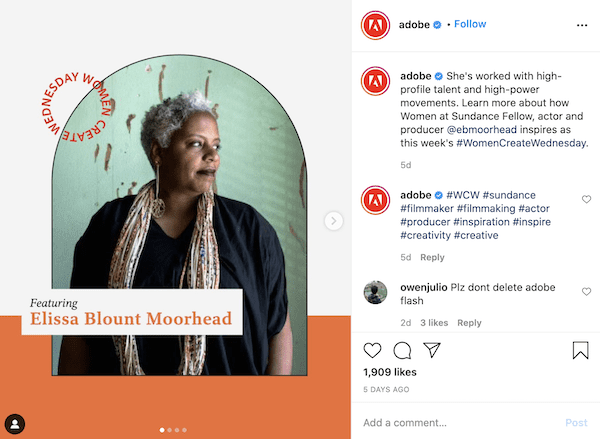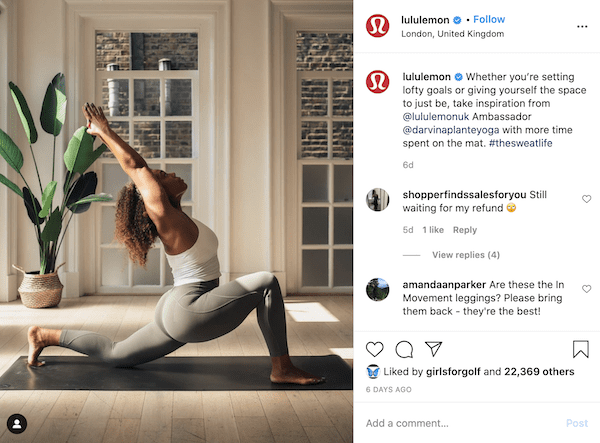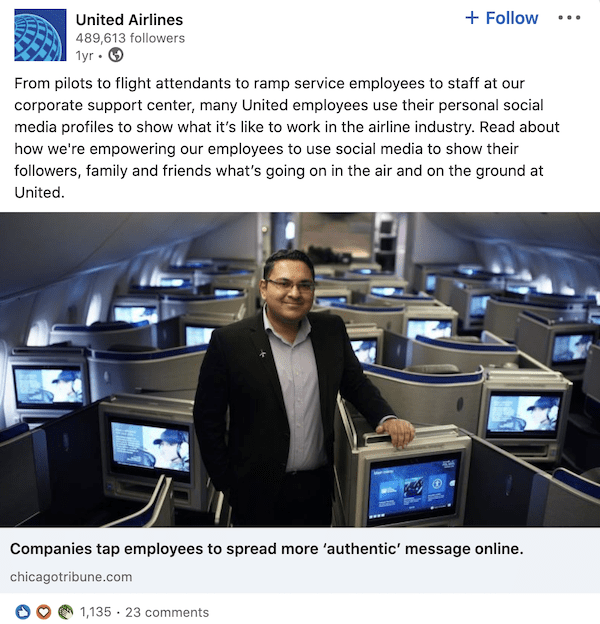For brands looking to grow authentic relationships with customers, creating a brand ambassador program makes a lot of sense.
People want recommendations from people they know and trust, and 74% of consumers identify word of mouth as a key influencer in their purchasing decision.
Companies that enable and reward people for sharing and evangelizing their brands will see more success with their marketing and brand building efforts.
Influencer marketing and brand ambassador programs are on the rise because they empower real people to share about products and services in more personalized and authentic ways.
Are you considering launching a brand ambassador program at your company but don’t know where to start? This guide will share everything your company needs to know to set up for success.
- What Is A Brand Ambassador Program
- Types of Brand Ambassador Programs
- Benefits of Brand Ambassador Program
- Steps to Launch A Brand Ambassador Program
- Brand Ambassador Program Best Practices
- Examples of Brand Ambassador Programs
- Are You Ready For A Brand Ambassador Program
What is a Brand Ambassador Program?
A brand ambassador program is a type of social marketing strategy that utilizes your company message, content, and particular influencers to improve areas of the business like sales, brand recognition, and corporate reputation.
The overall goal of a program like this is to build relationships and partnerships with people who genuinely like your content, company, and product or services.
When your company activates these brand ambassadors online, they are helping distribute positive messages about your company, which hopefully build more brand awareness over time.
What can I expect from a brand ambassador?
What your company can expect from brand ambassadors are people who are positively representing the brand in an authentic and consistent way. This could mean sharing or creating content, leaving online reviews, engaging on social media and in their networks, and contributing value that extends your word of mouth marketing strategy.
Is a social media brand ambassador different from an influencer?
Although you might be thinking a brand ambassador and influencer are the same, they are actually a bit different. An influencer is someone typically hired for a single social campaign to drive awareness from their large social following. Where a brand ambassador is long-term relationships that can last for months or years.
Influencers are paid and focused on the transaction between the brand. Where brand ambassadors might be compensated in some way financially, the goal of an ambassador program is to harness people who organically love your company, product, and/or services.
Brand ambassadors are more likely to be your customers and employees, those who have more connection to the company and want to show the world more about what your organization does.
Types of Brand Ambassador Programs
Depending on the established goals and audience for your program, you will want to choose the type of program that will best achieve those outcomes.
The most common types of brand ambassador programs are:
- Customer – This is probably the most common type of program as it incentivizes real customers to engage with the brand directly.
- Employees – Encouraging and rewarding employees for sharing employee experiences and company news is growing in popularity for companies. Another word for this type of program is employee advocacy.
- College – Students can act as brand ambassadors on their campus for companies that want to target specific markets and college-aged demographics.
- Affiliate-Based – Affiliate brand ambassadors will promote products and services on their own sites and accounts with an affiliate link that provides a commission for every purchase. Brands will often give ambassadors discount codes.
Depending on the needs of your company, you might have various brand ambassador programs set up, or just a very specific one.
Benefits of Brand Ambassador Program
In addition to driving sales and building brand awareness, a brand ambassador program can provide benefits that other marketing channels can’t.
Some of the benefits include:
- Humanizing your brand – Consumers prefer to buy from people rather than brands so having real people posting positive reviews of your products and services will drive real connections with consumers.
- Increasing social media presence – Your brand ambassadors have social networks and followings that you wouldn’t be able to tap into with just a brand account. Reach and engagement is both amplified with every ambassador you add to your program.
- Generating more user-generated content – Incentivizing creators to post and share their own content is both cost-effective and seen as more authentic. User-generated content is a must and continues to grow in popularity.
- Creating a community – Connecting fans of a brand will likely create stronger ties to your company and inspire others to want to get involved.
- Receiving more feedback – Organizations can use brand ambassadors to test new products and get valuable feedback since they have opened the lines of communication with genuine users.
- Generate more sales – Word of mouth is powerful, and people are more likely to buy when they see their friends, family, or colleagues sharing or talking about your brand. People trust people, which can equal more sales for your company.
- Can save your organization money – It’s no secret that paid advertising campaigns are getting more expensive and competitive. Everyone is fighting for attention, which can drive your costs up pending your industry. Creating a brand ambassador program can save you money on paid ads, but generate better ROI.
Want expertly crafted content to help refine your marketing, social selling, and recruiting strategies? Sign up for our newsletter and get a copy of our Personal Brand Starter Kit. 👇
Steps To Launching A Brand Ambassador Program Successfully
Before you create your brand ambassador program, it’s helpful to have a strategy in place.
Follow these steps to make sure your company is prepared for both launching a program and measuring its success.
1. Establish your goals
Having clear goals and expectations in place before you launch your program is the first step to success.
Whether you are focused on increasing sales or expanding to new audiences, knowing your aims will help you find the right ambassadors and how to incentivize them.
Let’s look at some of the common goals associated with these types of programs:
- Build brand awareness – The ambassadors are responsible for creating positive buzz about your business to as many people as possible.
- Create better social media content – They need to publish effective content on social media that aims to mobilize your target audience. Knowing which hashtags to use and the best times to post content is a plus.
- Increase reach – Brand ambassadors will find untapped social channels containing your target market and promote your brand to them to extend your reach.
2. Choose the right people
Looking for potential brand ambassadors is an important part of setting up your program. You want people whose values and qualities are in line with your company goals and objectives to lead your ambassadorship.
Ambassadors (or employee influencers) that already have networks of your target consumers will help fast-track your success in spreading the word about your brand.
Since they have built a community through the years on their social media of choice, they know how to publish content that their audience loves and will connect with.
Start utilizing some social listening. Usually, your employees and customers are great places to start.
According to Web Shandwick, 98% of employees use at least one social media site for personal use, of which 50% are already posting about their company.
These “employee ambassadors” are great to start with and help get a program organized as you can learn valuable insights from them. Plus, you can see if they will help organize your program, too!
Don’t forget to incentivize
You’ll also want to consider the right incentive to keep brand ambassadors motivated.
For example:
- Employee brand ambassadors will grow their professional networks and opportunities. Your company may also offer various employee recognition opportunities or other prizes to help encourage more engagement.
- Customer brand ambassadors you might offer discounts, free trials, get them involved in product testing, or offer free company swag. You want authentic engagement either way, but you can provide some incentives along the way too.
Be sure to be clear and upfront about what you will provide and what you expect in return from your program members.
It may be helpful to set up a formal application process to get more information about potential partners and why they want to work with your brand. If you need more help finding brand ambassadors, this guide can help you.
3. Offer training, products, and support
Brand ambassadors will need your help so they can promote your brand effectively. You will want to consider providing them with new products, equip them with assets, and let them know about upcoming events or insider info that you want them to promote.
You can also help them improve their skills in promoting your brand by signing them up for different workshops and courses, strong social media policy, as well as enrolling them in mastermind groups.
Providing ambassadors with tools to succeed allows you to invest in their success and provides them with the resources they need to post effectively.
4. Track their performance
With your goals in mind, you need to find a way to measure the social media performance of your ambassadors.
You’ll want to track how often they post, how many impressions and engagements they received, and how your brand reach and traffic are impacted.
Compare their progress or KPIs to your goals over time and see if they were able to reach or exceed them. Any good brand ambassador program you utilize will have reporting and tracking capabilities.
For example, EveryoneSocial is used for employee advocates and ambassadors, which provides a plethora of data to help your strategy.

Best Practices for Brand Ambassador Programs
Brand ambassador programs, like all relationships, require trust and communication. These best practices will encourage healthy connections between your brand and the people you are working with to promote it.
- Send frequent updates – be sure that your ambassadors know key dates for any product launches or company announcements. Keeping them in the loop and in the know will help them with creating up to-date content.
- Ask for feedback – it’s likely that your ambassadors are your brands biggest advocates and fans so they are very helpful resource to get feedback from. Product development and strategy can all be influenced by keeping yourself connected to your biggest and most vocal fans and catering to their needs.
- Offer suggestions – as you’ll be monitoring their progress and tracking engagement, feel free to offer data or insights to help them post most effectively. Encouraging them to establish their own voice while also providing ways to improve keeps everyone progressing and growing and will be appreciated by those who want to grow their personal brands, as well.
Examples of Brand Ambassador Programs
These companies have developed brand ambassador programs that use a wide range of incentives to achieve great results.
Adobe
Adobe’s Creative Insider Ambassador program is a great example of offering mutually beneficial incentives to members.
Adobe offers ambassadors tons of training resources like webinars and workshops to further develop expertise in the creative apps.
The voice of the brand ambassador is especially important to Adobe for developing new products and feature improvements so they provide surveys and opportunities to share feedback directly with the Adobe team.
There are also regular meetings with other ambassadors which creates a community and affords networking opportunities.
In return, brand ambassadors are asked to host workshops for their work colleagues to share their Adobe skills and offer suggestions for integrating Adobe solutions at their workplaces.

Lululemon
Lululemon’s ambassador program focuses on supporting local leaders and growing community.
Brand ambassadors get to test new products and provide feedback, and in return some host in-store classes and events.
Yoga instructors, athletes, and wellness influencers are all asked to share their goals, and Lululemon offers training and resources to support them.

United Airlines
United Airlines empowers its employees to be brand ambassadors and uses employee advocacy (also an EveryoneSocial customer) for bigger reach and more personalized content.
Posting photos with coworkers and sharing behind the scenes looks at new airplanes brings outsiders in to see company updates and announcements in a more authentic way.
It also strengthens the United employer brand by making it more human and sharing the employee experience.

Are You Ready For A Brand Ambassador Program?
In today’s digital and social media driven environment, pretty much every organization should consider some brand ambassador program. Pending your needs and wants, your brand ambassador program may focus heavily on employees, customers, or a combination of “influencers.”
However, there is some work involved to ensure a great program will be sustainable, and managing it for the long-term takes a bit of work. So before you jump right in, use this checklist to ensure your organization is ready.
Here are a few signs your company is primed for a program:
- Your product or services is top quality. If you are confident that your product or services are the highest standards possible, then you might be ready. You want to fix any issues and ensure you have the right team before trying to get people to promote you.
- Your organization has strong company values and culture. Employees will be some of your best brand ambassadors, but if your values, mission, or culture are a mess it will be much harder to get people on board.
- Your customer relationships are very strong. Having loyal and happy customers will be massively beneficial if you want to build a brand ambassador program around them. If they are already sharing on social media about your company in a positive way, that’s a great sign.
- You have plenty of marketing resources. You want to arm your brand ambassadors with the right tools, content, products, and other promotional material that makes everyone’s life easier.
- Social media is a top priority for your company. For the brand ambassador program to work, your social media needs to be active. You don’t need millions of followers, but you should value social media networks and have a strategy in place. It lets you better build relationships, drive awareness, and engage with ambassadors and audiences more effectively.
















